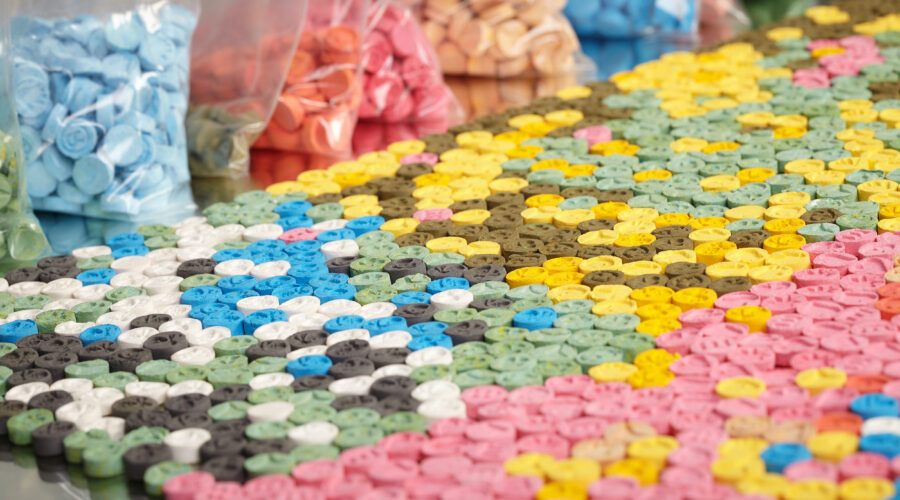Microdosing MDMA: What Research Says
When people microdose, they will typically use magic mushrooms or LSD. Sometimes, other psychedelics will be used, such as mescaline and DMT. Then there are users who microdose not with psychedelics at all, but with substances like cannabis and MDMA.
This post specifically focuses on the practice of microdosing MDMA as a way to deal with mental health issues. It explores what research indicates about this practice, as well as any harm reduction tips if considering microdosing MDMA.
RELATED: Candy Flipping: What Is It, And Is It Safe?
No Studies Have Directly Looked At Microdosing MDMA
Unlike LSD and psilocybin mushrooms, there are no studies directly looking at the effects of microdosing MDMA. Microdoses of MDMA would be doses of the compound so small that you don’t have the classic MDMA experience, which includes strong feelings of euphoria, empathy, love, or physical effects like bruxism (teeth grinding, jaw clenching) and sweating that can go on for a few hours.
There are various studies on the effects of low doses of MDMA, such as 50mg, and a more recent study that gave participants 40mg. But these doses would induce noticeable classic MDMA effects. This is generally not considered a microdose.
A microdose is generally one-tenth to one-twentieth of a normal recreational dose. If a typical dose of MDMA is 100mg, then a microdose would be around 10mg. Researchers have not looked at the subjective effects, safety, or long-term effects of regularly taking MDMA at this dosage.
RELATED: What’s The Difference Between MDA And MDMA? We Explain
Research On Macrodosing MDMA
Despite the dearth of research on microdosing MDMA, we do, fortunately, have a large body of research on larger doses of MDMA. And these studies may be able to inform us somewhat of the safety of microdosing this compound.
The Safety Of MDMA
The first randomized controlled study on MDMA as a therapeutic tool found that the drug is safe and effective for patients with treatment-resistant post-traumatic stress disorder (PTSD). Further research has confirmed the safety of MDMA-assisted psychotherapy in doses including 40mg, 100mg, and 125mg.
These are studies on MDMA in a controlled and supervised setting. Also, participants often have only two sessions with MDMA. This is different from how many people recreationally use MDMA, which might be many times over the course of a year. Moreover, when microdosing MDMA, this will typically involve taking MDMA two to three times a week, potentially for months at a time.
We simply don’t know yet how this impacts people’s physical and mental health, as well as cognitive function, in the long-term.
Ready to explore a new horizon in mental health? Try out the beta version of HealingChat, HealingMaps AI chatbot that takes all our vetted content, clinics and retreats to answer all your questions in a safe environment. Try the beta version now!
RELATED: The Fadiman Microdosing Protocol vs the Stamets Stack
Studies On MDMA
When it comes to studies looking at the effects of recreationally using MDMA, the results are mixed. There has been debate about the neurotoxic effects of MDMA in humans. Some studies show that MDMA has damaged serotonin receptors in the brain. And this effect has been implicated in other long-term effects seen in regular MDMA users, such as worsened mental health and cognitive function.
However, many studies on the neurotoxic effects of MDMA are on mice, not humans. Plus, studies on humans often look at people with heavy use patterns. Researchers have found no convincing evidence that moderate MDMA use is associated with harmful brain alterations. Some studies have even found that repeated low doses of MDMA can provide neuroprotection against a subsequent neurotoxic dose of MDMA.
Factors that contribute to the neurotoxicity of MDMA include a high dose, taking high doses frequently, and taking MDMA in a hot environment.
The available research does not mean that repeated low doses of MDMA — or microdosing MDMA — are definitely not neurotoxic.
Maartje de Win, MD, PhD, has stressed that “we cannot exclude that MDMA even in low doses is neurotoxic to the brain.” It could be that microdoses, since they are much lower than low doses, pose a smaller risk. More research is necessary to establish this.
Monitor Tolerance To MDMA
Due to MDMA’s effects on serotonin and concerns about possible neurotoxicity, this drug is not often the go-to choice as a compound for microdosing. Both psilocybin and LSD have better safety profiles than MDMA — so microdosing these compounds may be less harmful. While many people may microdose MDMA without reporting problems, taking very low doses of MDMA may result in negative effects.
Taking MDMA routinely over time tends to increase tolerance. This means you require a higher dosage to achieve the desired effect. If that happens, and you do start taking higher doses, then the risks of regular dosing increase.
RELATED: What is Kanna? The Legal Version of MDMA
Treating Mental Health Issues With MDMA
Several studies have demonstrated that MDMA-assisted psychotherapy is highly effective in the treatment of PTSD. In 2017, the Food and Drug Administration (FDA) granted Breakthrough Therapy Designation to MDMA for treating PTSD. This sped up the process of carrying out further clinical trials. MDMA therapy can also be helpful for people struggling with social anxiety, alcoholism, and relationship issues.
Based on this research, people might try microdosing MDMA as a way to treat conditions like depression, anxiety, and social anxiety. Just as many people find that microdosing LSD or psilocybin mushrooms improve their mental health, people who microdose MDMA may find similar results.
However, the mental health effects of taking macrodoses of MDMA do not necessarily mean that microdoses of MDMA will also lead to significant improvements in mental health.
If you are looking to improve your mental health and personal relationships with MDMA, so far, the evidence suggests that two-to-three moderate doses of the drug in a therapeutic setting leads to significant and sustained improvements. So it might be more likely you’d feel long-term benefits from these experiences compared to microdosing MDMA.
RELATED: How To Start Microdosing Psychedelics: A Beginner’s Guide
MDMA Abuse
MDMA is a substance that many people abuse. The same does not really apply to psychedelics that people commonly microdose, like psilocybin and LSD. These psychedelics have a low potential for abuse.
Taking MDMA causes a surge of dopamine. This is a reward chemical that motivates people to repeat the action that caused that surge. Classic psychedelics, in contrast, do not affect dopamine in the same way.
MDMA abuse typically involves high doses. While microdosing MDMA involves tiny doses, due to the problem of tolerance mentioned earlier, there is a potential risk that microdosing might turn into MDMA abuse.
For example, if you microdose MDMA and you experience benefits like reduced anxiety and increased social confidence and happiness, you might take higher doses to achieve these effects when your tolerance to the drug increases.
RELATED: Hippie Flipping – What Is It, And Is It Safe?
Harm Reduction Tips For Microdosing MDMA
Research on microdosing MDMA is lacking, so we simply don’t know if regularly taking tiny doses of the drug is safe or effective. For anyone considering microdosing MDMA — or currently doing it — it’s important to follow some essential harm reduction practices.
- Test your batch. If buying MDMA, you may end up with a different and more harmful substance. Common drugs missold as MDMA include PMA, which has been implicated in a number of deaths. This is why you should always test any batch of MDMA you have. You can buy MDMA testing kits from providers such as DanceSafe.
- Start with a very low dose. If you try a twentieth of the normal dose of MDMA and feel a benefit, there might not be a need to dose higher. Research generally finds that low doses of MDMA are safe, so it’s possible that microdoses could be even safer. However, studies have yet to prove this.
- Regulate dosage. If there are no effects from MDMA after a two-day break between dosing days, your tolerance may have increased. In this case, you shouldn’t microdose at that frequency.
- Stay in control. If you notice negative effects on mental health from microdosing MDMA, either consider stopping or changing your regimen. It’s possible you could be dosing too often or too high.
Other than following the above tips, you could try microdosing a classic psychedelic instead of MDMA.
Indeed, it’s best to make an informed decision when it comes to taking these mood-altering substances. That means looking at available evidence on what kind of use is safe and effective. This also means avoiding any unnecessary risks.
Two to three sessions of MDMA-assisted therapy have the potential to significantly improve mental health issues, with minimal risk. But we don’t yet know if the same applies to microdosing.
RELATED: The Conundrum Of Microdosing



